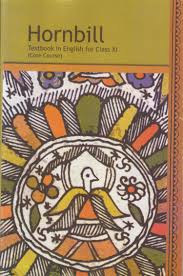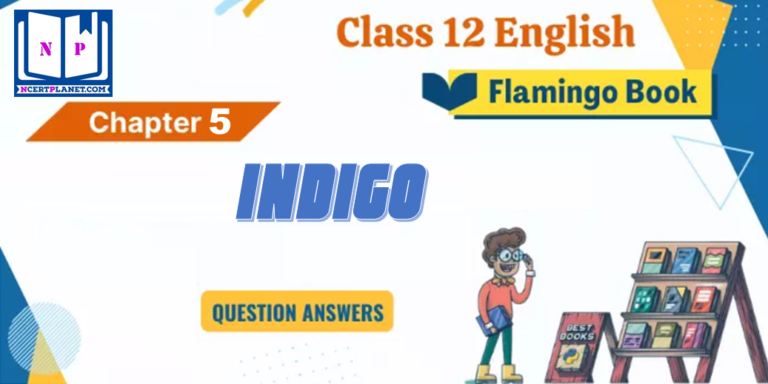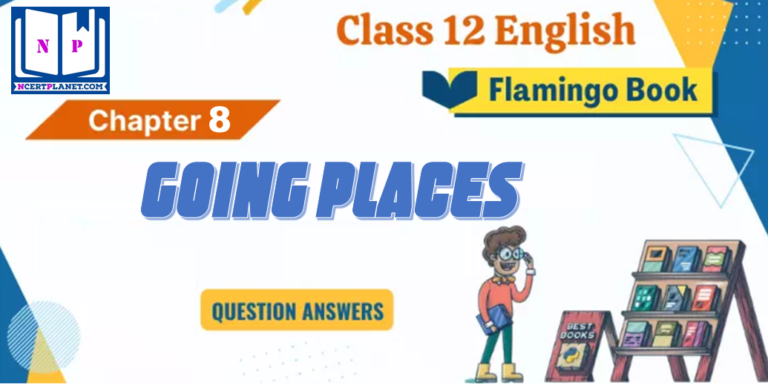Class 10 - English : Hornbill
Poem 4 - The Voice of the Rain

Top Block 1
QUESTIONS FROM TEXTBOOK SOLVED
A. Think it Out
Question 1 : There are two voices in the poem. Who do they belong to? Which lines indicate this?
Answer :
One of them belongs to the poet and the other to the rain. These are indicated in
lines 1-2 and 3-9 respectively.
Question 2 : What does the phrase ‘strange to tell’ mean?
Answer :
The phrase refers to a strange phenomenon—the rain gives an answer to the poet’s query. It is surprising to report the answer.
Question 3 : There is a parallel drawn between r« in and music. Which words indicate this? Explain the similarity between the two.
Answer :
The following words/phrases indicate the parallel between rain and music: ‘Poem of Earth’, ‘eternal I rise impalpable out of land and the bottomless sea’ ‘For song duly with love returns.’
Both originate from a source, rise up, reach fulfilment, wander about whether cared about or not and finally return to source of origin with love.
Question 4 : How is the cyclic movement of rein brought out in the poem?
Answer :
Rain water rises untouched out of the land and deep sea and gathers in the sky, where it changes form, and then comes down to earth to bathe the dry tiny particles of dust layers and all that lies buried under it. Then it returns to the place of its origin. Science textbooks indicate that water vapours from the rivers and ocean rise up to the sky due to the intense heat. They assume the form of clouds and after condensation drop down as rain. The water flows back through rivers to the seas and oceans.
Question 5 : Why are the last two lines put within brackets?
Answer :
The last two lines contain a comment about music and its cycle. These differ from the first nine lines. The first two lines are the voice of the poet whereas lines three to nine are spoken by rain. The cycle of song is put within brackets to mark the difference in speakers but similarity in content.
Question 6 : List the pairs of opposites found in the poem.
Answer :
rise-descend; day-night; reck’d-unreck’d
Mddle block 1
B. Notice the sentence pattern in the following:
Rewrite these sentences in prose.
- And who art thou? said I to the soft-falling shower.
- I am the Poem of Earth, said the voice of the rain.
- Eternal I rise
- For song duly with love returns.
Answer:
- I said to the soft-falling shower, “Who are you?”
- The voice of the rain said, “I am the poem of Earth.”
- I rise eternally.
- For song returns duly with love.
MORE QUESTIONS SOLVED
A. Short Answer Type Questions
Question 1 : The poem begins in a conversational tone. Who are the two participants? What is the advantage of this method?
Answer :
The two participants are the poet and the rain. The poet makes the rain relate its own story. This direct presentation makes the narration more authentic, interesting and captivating.
Question 2 : “Behind the apparent simplicity, the poem hides a deep meaning.” What exactly does the poem convey to the reader?
Answer :
The poem is not merely a description of life-cycle of rain. It has deeper meaning. Rain is a poem or thing of beauty of Earth and so is song or music. The comparison between rain and music .and their function: making the Earth pure and beautiful conveys the eternal role of natural phenomenon and art in real life.
Question 3 : How does the rain justify its claim: “I am the Poem of Earth’”?
Answer :
The rain narrates the journey of its life—from birth to return to origin in mythical terms. The facts are scientific but the phrases that convey them are metaphoric and literary. The whole journey has a beauty and charm associated with a poem.
C. Long Answer Type Questions
Question 1 : How is the cyclic movement of rain brought out in the poem “The Voice of the Rain”? What points of similarity do you notice between rain and music?
Answer :
The rain calls itself the poem of earth. It is everlasting and perpetual. It is something that cannot be touched. It originates from the land and the deep sea. Then it rises upward to heaven where it changes its form into a cloud, yet remains the same in quality. From the sky it pours down on earth to wash the dry tiny particles and dust layers of the earth. The rain helps the unborn seeds to sprout. These seeds lay hidden and unborn under the layers of earth. Rain gives back life to its origin making it pure and beautiful. Rain and music are both beautiful and life-giving. They are eternal sources of joy and go on perpetually. They inspire even dormant objects and persons with life and activity.
Bottom Block 3
Click here to visit Official CBSE website
Click here for NCERT solutions
Click here to visit Official Website of NCERT
Click here to download NCERT Textbooks



